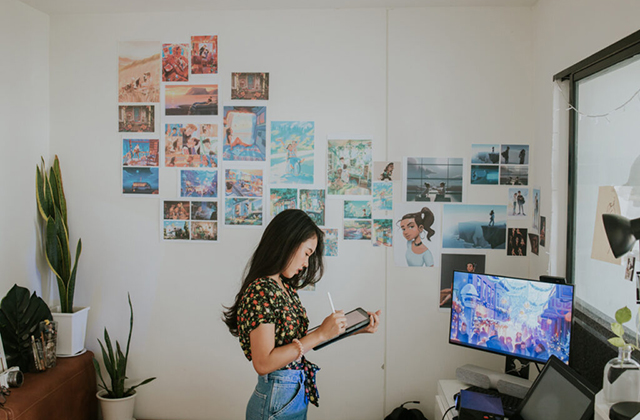It only takes a little imagination to bring to life food using the art of illustration. The art of Food Illustration is as old as the hills. We know about our predecessors’ eating habits by looking at their food illustration. The sketch of a shopping cart can be curlicued and stuffed with fun and animated drawings of groceries. Storyboard artist Sydney are mainly required on films containing large amounts of action and/or CGI, where complex chase, fight or battle scenes need to be visualized and carefully planned.
There is no better way to depict a healthy eating pyramid than by illustrating the foods contained at each level of importance in the pyramid. This is useful in school environments where children’s attention will be captured by adorable illustrations of foods as opposed to austere clinical pictures. Fun illustrations of vegetables definitely give another meaning to the bottom of the barrel of preferred items in a kid’s menu.
There are lots of styles to practice; from silhouette styles to the very realistic illustration; it all depends on the artist’s style. For instance, food illustration for magazine articles and photographic promotions is commonly created using Fimo or plasticine in various colors. Once this is hardened in a baking process, further coloring can be done using acrylic paints to get an original-looking sheen on the vegetable, fruit or meat or even a whole meal can be represented in this way.
Food can be made fun for kids using illustration techniques such as games, coloring pictures, stories, songs, making collages using dried beans, rice, colored lentils, spaghetti, pasta, making fruit and vegetable representations of people’s faces, constructing and icing a gingerbread house, playing ‘At the restaurant or market or in the kitchen’.
The method of making a meal, the recipe, can be illustrated with pictures. This comes in handy when depicting international foods. Each country of the world shows its unique identity through food presentation and its illustration. Photographic trickery to enhance interest, lighting composition, angles, soft and sharp focus, props that compliment the foods. Choosing the right plates, cups etc glasses and cutlery to compliment the food to be illustrated can also be considered an art.
An artist should consider themes and styles, formal or informal and whether the style is in vogue. Also, the props can say a lot about the establishment whether it is old style or fashionable. Furthermore, the artist should always keep in mind the target audience – are they affluent and educated diners or are they more of a home baking crowd? Are the illustrations for school cafeterias or for hotels? Is the illustration for a cafe or a restaurant for fine dining?
Consider the occasion; is it Thanksgiving meals the artist is illustrating or summer picnics? Along with the occasion you will need to research the appropriate in-season foods and garnishes. This can add another interesting dimension to the illustration. The best part is that you, as the illustrator artist, will be using your research skills and artistry to come up with very individualist ways to illustrate food.

